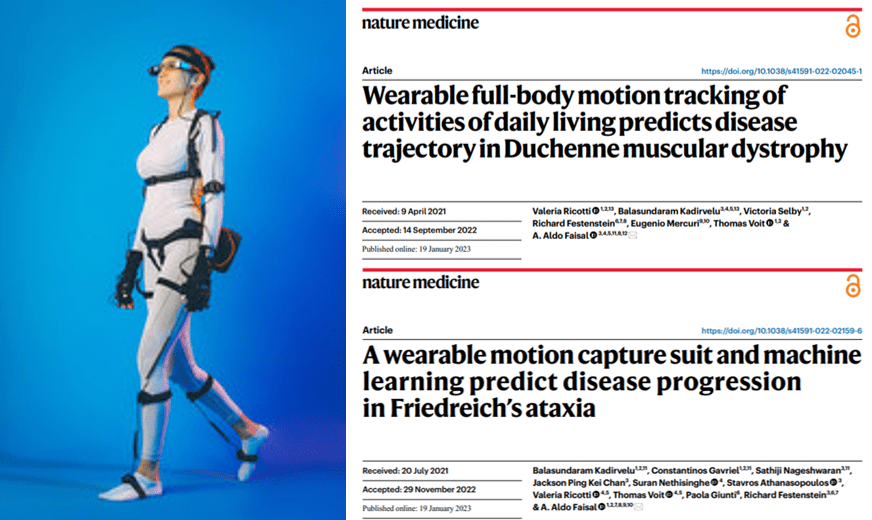
Motion capture technology: a new tool for research into rare neurodegenerative diseases

January 27, 2023
Research and drug development for rare diseases are often hampered by the need for large numbers of patients to assess clinical trial outcomes and, in the case of rare neurodegenerative diseases, by slow disease progression. In particular, the “by eye” behavioral assessments currently used to monitor disease progression require long-term observation to detect changes in patient status, may be subject to observer bias, and can lack the precision needed to detect small but clinically relevant alterations in functional capabilities.
Wearable sensors: more than just entertainment
We have all become accustomed to seeing characters in films like Avatar being brought to life using wearable motion capture technology. This technique has now been combined with machine learning and tested as tool for monitoring and predicting disease progression for medical research on two rare diseases:
- Duchenne muscular dystrophy (DMD) is a rare, X-linked recessive, neuromuscular disease (incidence: 1/3,500 to 1/4,000 boys and 1/50,000,000 girls), characterized by progressive muscle degeneration and weakness.
- Friedreich’s ataxia is a rare (1/20,000 to 1/50,000 individuals), inherited, degenerative disease of the central nervous system characterized by impaired muscle co-ordination.
The two studies were published in the prestigious journal Nature Medicine on January 19, 2023:
- Ricotti V, Kadirvelu B, Selby V, Festenstein R, Mercuri E, Voit T, Faisal AA. Wearable full-body motion tracking of activities of daily living predicts disease trajectory in Duchenne muscular dystrophy. Nat Med. 2023 Jan;29(1):95-103. doi: 10.1038/s41591-022-02045-1.
- Kadirvelu B, Gavriel C, Nageshwaran S, Chan JPK, Nethisinghe S, Athanasopoulos S, Ricotti V, Voit T, Giunti P, Festenstein R, Faisal AA. A wearable motion capture suit and machine learning predict disease progression in Friedreich’s ataxia. Nat Med. 2023 Jan;29(1):86-94. doi: 10.1038/s41591-022-02159-6.
In both studies, the disease predictions generated using the digital recordings outperformed those based on standard clinical assessments. Thus, the behavioral features, or digital biomarkers, identified by the wearable motion sensors could be used to more accurately track an individual’s disease progression or response to a new therapy, helping to reduce the time and size of the cohorts needed for clinical trials.
Santé Active Edition – Synergy Pharm
The team at Santé Active Edition – Synergy Pharm has a special interest in rare diseases, and has worked with numerous clients to provide medical writing assistance for communicating both to the scientific community and to the general public on a range of rare disease topics, including craniofacial microsomia, cystic fibrosis, inherited epidermolysis bullosa, inherited metabolic disorders, and neuromyelitis optica spectrum disorders (NMOSD) and other rare immune-mediated disorders of the central nervous system.
Our science and medical communications agency has also produced a series of multidisciplinary textbooks, “sketchnotes” and researcher’s interviews on the theme of neurology and neurological disorders for the “Observatoire B2V des Mémoires” (B2V Memory Observatory).